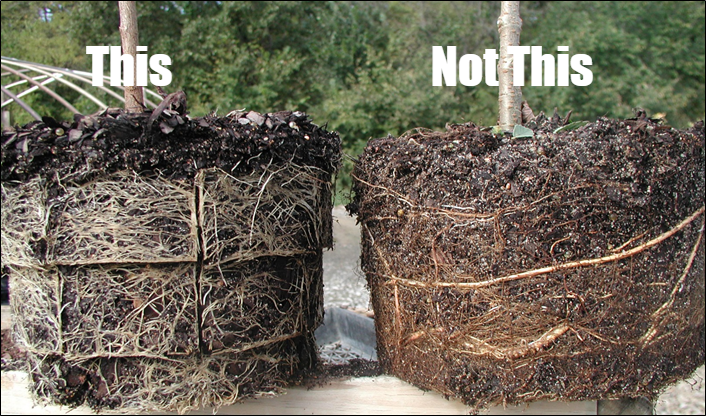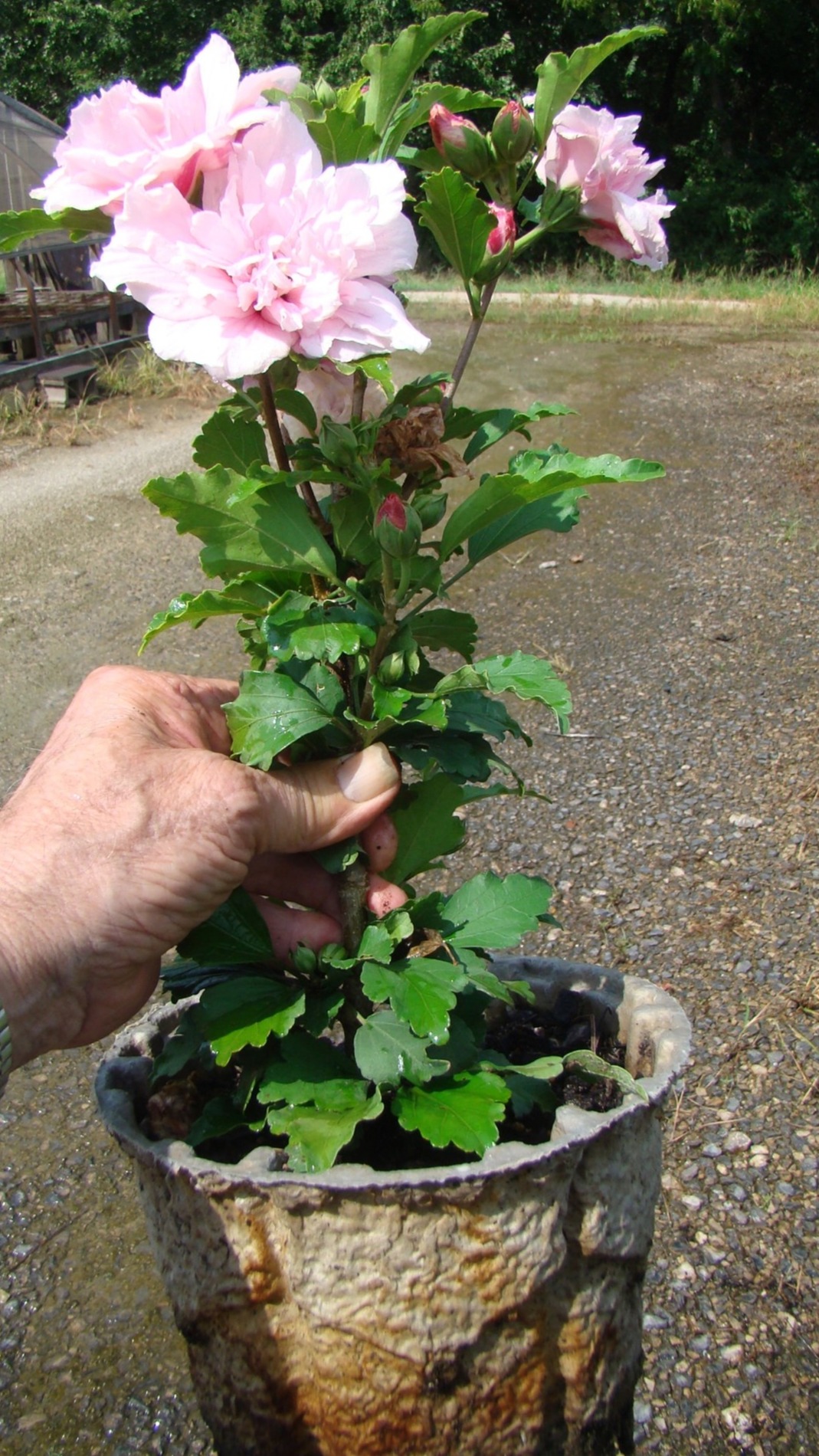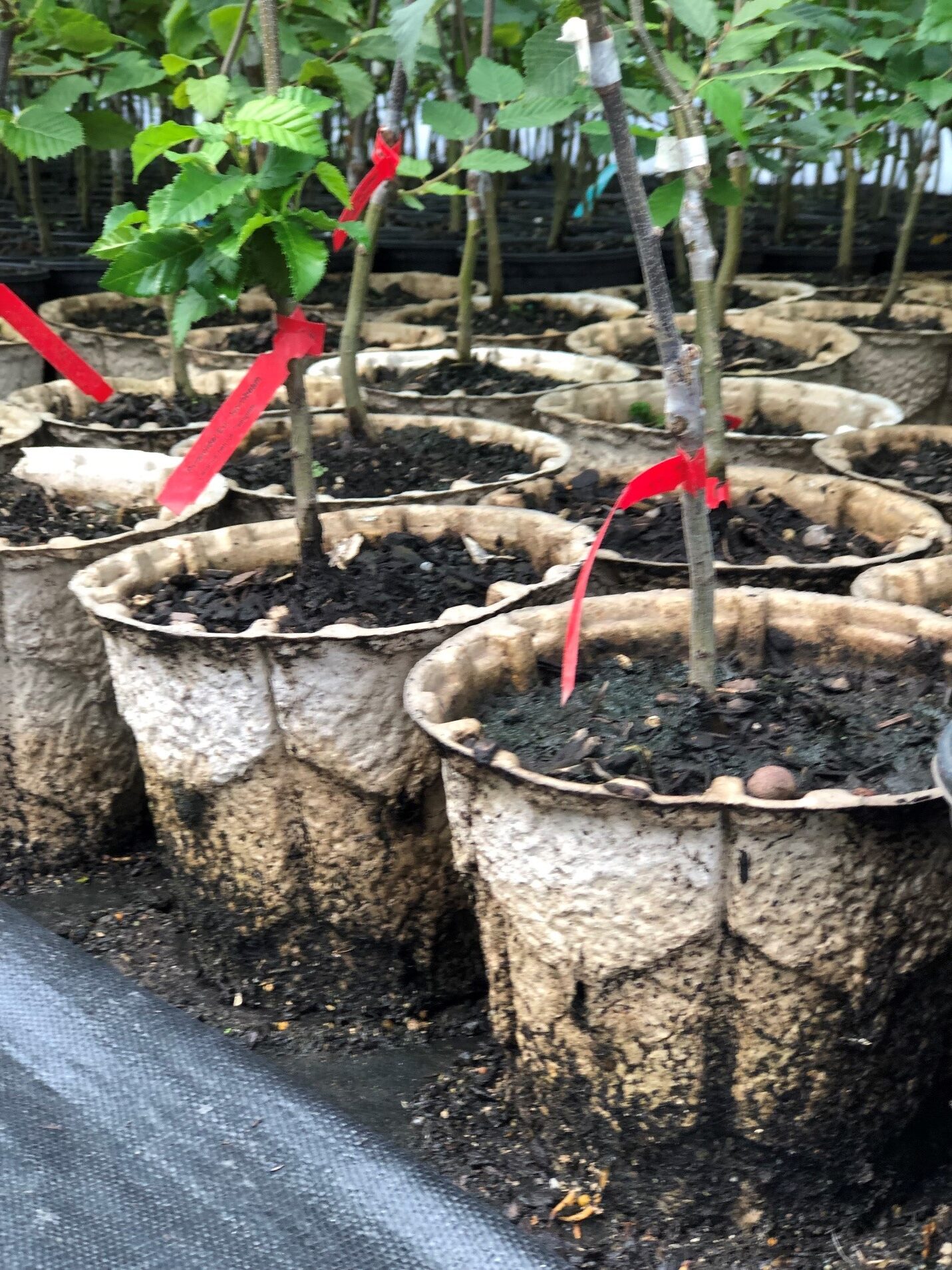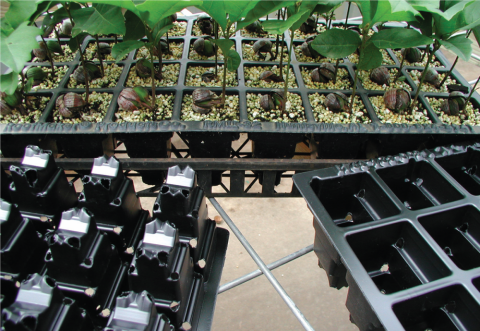If a nursery wants to be successful, there are many strategic decisions to make. What to grow may be the biggest decision but how to grow these plants is just as important. Ever notice when a customer knocks a plant out of its container? Although some customers still only make decisions based on what they see, the plant top, thanks to the internet, an increasing number of today’s informed customers are now looking critically at the root system too. The days of excusing few, congested, circling roots in containers will soon be over.

Traditionally, nurseries have tried to maximize profits by minimizing production costs, choosing to grow plants in the cheapest smooth-walled conventional container because it is just packaging, right? In fact, if other factors of plant production are managed well with suitable mix, water, and fertilizer, attractive leaves and flowers can seemingly be grown in almost any container even though with limited, feeble, circling root systems.
When planted in the landscape, however, customers eventually experience plants that are ill-equipped to grow on their own. Unfortunately, the defective root system culprit may never even be discovered. Notoriously, new trees are known to “sit” due to transplant shock. This recovery time of just struggling to stay alive before expending energy on new growth may take a year or more. The tree may recover in some limited capacity or eventually die. Several factors usually get the blame. Perhaps the landscaper tried to “correct” the circling roots by slicing the rootball. Maybe the homeowner neglected to water or watered too much. Another possibility is that the tree species simply was a poor selection for the site. A simple autopsy of washing soil away from the weak root system may have provided the true cause of the failure.
Amazingly, concern about circling and deformed roots is not new; in 1889, a USA patent was issued for a container designed to attempt to stop root circling. Even though that was a flawed design, the quest for a container that improved, rather than hindered root development continued for many years. Today, plants in landscapes and reclamation projects all over the world are benefiting from the research which led to RootMaker patented designs. Increased root branching results in equipped plants with greater efficiency with water and nutrient absorption, both in the nursery and once out on their own.
Informed nursery customers now know about these production tools; give them, and your plants, what they deserve.



